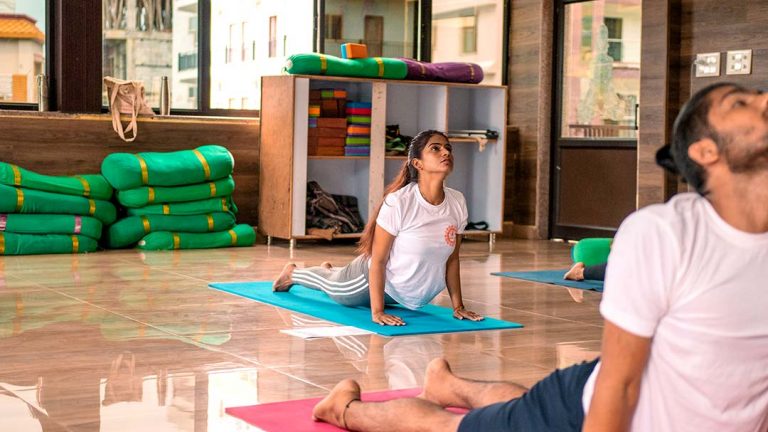Things you need to know for Studying Ayurveda. 5 daily Ayurveda tips to follow.
The history of Ayurveda
The word ‘Ayurveda’ has a Sanskrit origin, divided into two it is Ayu and vada. The word Ayu is primarily derived from the word ayus which means life. In Charak Samhita Ayu is described under the Physical body, senses, Mental body and spiritual body. While the word Veda originates from the word vid, which means knowledge. Thus, Ayurveda translates to ‘Knowledge of life.’
The timeline around the advent of Ayurveda is unknown but it is approximate 5000 years old. Just like the Vedas of Indian scriptures were passed down through generations via cognition or through meditation practices of people there are rumours of spiritual awakening of people to endure the knowledge of Vedas to be handed down to us. The system of penning thoughts did not exist at the time of Vedas or Ayurveda. The knowledge of Ayurveda comprises healing methods, longevity, physical surgeries, prevention of diseases, and more.
There are 4 major concepts of Vedas in Indian scripture.
- Rig veda
- Yajur Veda
- Samveda
- Atharvaveda
In Atharvaveda, there is a reference to Ayurveda. It gives a systematic description of Ashtanga Ayurveda which are the eight branches of Ayurveda.
- Kaya Chikitsa (Internal medicine)
- Shalyatantra (surgery)
- Shalkyatantra (study of head and neck)
- Agadtantra (Toxicology)
- bootvidya (Spiritual healing and psychiatry)
- Kaumar and Prasutitantra (Pediatrics and gynaecology)
- Rasayan (geriatrics and rejuvenation)
- Vaajikaran (reproduction and fortification of carnal pleasures)
The various streams of Ayurveda were propagated through two schools, Atreya sampradaya (school of physicians) and Dhanvantri (school of surgeons). These two schools made the practices of Ayurveda viable scientifically. Charak Samhita, Sushruta Samhita and ashtanga hridayam are well-known texts of Ayurveda.
Ayurveda practices were at their peak in the Buddhist era around 500BC. This period is known as the growth of Ras-shastra and Siddha medicine which is marked as years where the use of mercury sulphur and metals with herbs were used promptly to make medicines. Before this era, Ayurveda medicine was only made of herbs and minerals.
In the time of Chandra Gupta Maurya, Ayurveda was established in the health care system of India. It is marked as the golden period for the practices of Ayurveda. During the Mughal invasion, India faced the destruction of humongous libraries with valuable documents of Ayurveda and many more historical documents at Takshashila and Nalanda. With their invasion, Mughals indulged themselves in carnal pleasures where Rasayana and Vaajikaran streams of Ayurveda received mileage, taking it to the higher ground. Until the colonization by the British, the usage of Ayurvedic medicines was the only prevention and after the Britishers, we are still struggling to implement ayurvedic tactics in the present time.
Taboos related to Ayurveda :
Ayurveda as a preference for the prevention of diseases has deteriorated significantly. Western medicine has opened the doors of a ‘fast recovery’ perception inside people’s minds and it is being propagated further with the same ideology. Popping a pill in a time of misery and pain has become the new normal. The Entertainment industry (media) makes sure of the fact that we know the benefits of using western medications. It has worked its magic in influencing the audience.
Over the years with the reduced usage of Ayurvedic preventive methods people have formed their own subjective opinions on how Ayurveda truly is and have questioned its efficacy.
• Ayurvedic medicines are all about consuming leaves.
People perceive ayurvedic medicines to be only in powder form and of ancient value. You sit under a tree and collect leaves and flowers to only crush them into powder form to make them medicinal.
First of all, that falls under herbology which is a different study of plants and their medicinal benefits. Ayurveda is a mixture of plant-based medicine and lifestyle changes which includes changes in eating habits and sleeping patterns.
• Ayurvedic medicines do not have a long-lasting effect
On the contrary, as ayurvedic medicines are the inculcation of a new lifestyle itself, the efficacy rates are high. When your body gets used to a certain level of immunity and antibodies it is very unlikely for your body to deteriorate as from the chore of our bodies we have learned to fight bacteria and viruses.
• Ayurvedic medicines have longer consumption period
The idea behind ayurvedic preventive methods is to get your body into new improved healthy habits. Consuming nutritious food to sleeping seven hours a night helps our bodies, in the long run, to function strongly. And a lifestyle change does not happen in one day or five days.
Hence the period of consuming ayurvedic medicine is longer but only because it is working towards eliminating the bacteria and toxins from its roots.
• Ayurvedic medicines cannot be consumed with western medicine
As it is always recommended to consume only one type of medicine for one illness but it does not mean one forbids the use of western medicine while there is a course going on for the ayurvedic one. Ayurveda works on the imbalances of the body. Whilst western medicine is symptoms based. So when we consume drugs to heal from the symptoms our bodies rather become weak due to the interaction of drugs with chemicals in our bodies.
Ayurvedic medicines are functioning on eliminating imbalances from their root cause so it is advised to not consume western medicines with ayurvedic prevention but it is only to not decrease the intensity of the healing process.
• Ayurveda is the ultimate path to wellness
Yes, with the advent of western medicine people have forgotten the methods of Ayurveda which works directly on the imbalances of the body. With the increased amount of stress, consumption of substances and lack of nutrition in the body, more people are becoming a victim of ill health.
To recover fast in this mechanic world people do prefer to have quick recoveries and whilst it does give instant relief, western medicines are not a long-term solution for health. Ayurvedic medicines work around our energies and imbalances from their roots but an amalgamation of both treatments can be beneficial to the health in extreme cases of illness.
3 things you need to know before studying Ayurveda :
- A brief history of Ayurveda
- How Ayurveda influences a lifestyle change
- Benefits and contraindications of Ayurveda
Before venturing into the world of Ayurveda it is important to know the background of the study to understand if it is something that you wish to incorporate into your lifestyle. Just like we tend to take reviews from people before exploring a cafe or a restaurant, getting reviews on the methods of Ayurveda and how to incorporate that lifestyle is very important.
With all the new definitions and perceptions towards Ayurveda coming about, it is important to go the traditional way if you wish to learn what is Ayurveda and how it functions from the origin of the place. Five elements of the earth play a major role in the study of Ayurveda, combined with the types of body and its energies.
- Vata
- Pitta
- Kapha
These three are Dosha (constitutions) of the body, imbalance of any one of them can cause illness and bodily issues. Vata is a dosha and a personality as well it consists of elements like ether and air in the body. Pitta has fire and water dominating, whereas Kapha has earth and water dominating. All three bodily constitutes possess different expertise and traits. Ayurveda is the study of the imbalances of these five elements in our body.
Understanding these three bodily constitutions and their imbalances makes it easier to identify issues within one body. Our mental body and physical body are affected by these elements throughout the day. For example, if a person’s air element increases, it is known as Vata dosha. Here, the person experiences fluctuations in mood, brain fog, joint pain, increased cortisol levels, gastronomical issues, and more. All these issues are connected to the air that runs within our bodies. If it increases more than its required space, these issues are likely to surface.
When a person faces more digestion issues, acne on the skin, and dryness, it means the fire in the body has increased. This means their pitta has increased, making it Pitta dosha. In the end, when the mucus in the body increases the person experiences mental disturbances like depression, dullness, fatigue, cough and cold, this means Kapha dosha, where the earth element in the body has become imbalanced.
There are remedies to balance out each of the elements. They majorly require lifestyle changes, food habits, and working and sleeping patterns. These lifestyle-related changes should only be practised under an ayurvedic doctor who is experienced in the field and not messed around lightly. The shift in lifestyle can be heavy for the body to adapt to, and without proper knowledge, there can be repercussions as well.
When people talk about the benefits of Ayurveda it is not very often that people discuss their contraindications. Studies have proven that not all natural remedies are for everyone. Over the years our physical bodies have seen a lot of growth and limitations as well. We are not very adaptive in recent years as we were in the past. Some of it can be blamed on the lifestyle that we follow, which is of comfort. Children are not simply running around in the mud as they did back in time, nor are they walking kilometres to reach their school. The food that we consume has become highly processed with the least amount of exercise from our body. This has naturally reduced the level of our immunity and tolerance.
As a result, bodies have become habitual of quick fixes and modernised approaches. This leaves less room for ayurvedic medicines to work their wonder as the body has developed no acceptance for it. Therefore, not all bodies can receive ayurvedic prevention for illness.
5 daily practices for a balanced body :
- Warm water, first thing in the morning
- 20-minutes daily Vyayam
- Avoid water intake during a meal
- Avoid food after sunset
- Daily meditation
Ayurveda talks about a lifestyle that should be followed keeping in mind the natural elements that exist around us. It does not let a person reach the level of prevention when she is constantly working on wellness every day.
Consuming warm water first thing in the morning has been medically proven to be helpful to clear your system early in the morning. A healthy gut means long life. Toxins originating at the base of the gut are the most poisonous ones. When we consume warm water, we give our digestive tract a gentle nudge to clean out the waste and keep our bodies toxin free.
Post a clean gut, moving your joints first thing in the morning ensures a healthy foundation for your body. It not only keeps our physical body healthy but it regulates cortisol levels in our body, keeping stress away from us. At the same time, with proper cleansing of the gut, our digestive system also requires a good amount of energy whilst processing food that we consume, and if we drink water during the digestion process, it decreases the level of HCL in our body causing indigestion, bloating, constipation, and more. With the same ideology of digestion, we consume heavy meals during lunch because the fire in our body is on high due to the sun as well. Hence when we consume food post sundown, we make sure to eat light as the external help for digestion is not available to post sunset.
Last but not the least, to keep all of the processes in our physical body steady, practising meditation daily is recommended in the lifestyle change in Ayurveda. As meditation helps to increase dopamine levels in the body which is responsible for feeling happy and enthusiastic. It also helps us to gain better concentration and awareness in our bodies. With increased awareness, an individual is more likely to make constructive decisions related to their physical and mental health.
Related Posts:
- Yoga Poses for Weight Loss: The Top 10 Advantages
- Yoga for Diabetes. How Stress Causes Diabetes.
- 5 Yoga Poses that give you relief from back pain
- 10 Benefits of daily yoga practice
- Why choose yoga as a career?
- Yoga Teacher Training vs Yoga Retreat. What should you choose?
- Methods to boost Endurance during Aerobic and Anaerobic Exercises.
- Yoga Teacher Training in Rishikesh India
- Why Join Agni Yoga India for Yoga Teacher Training in Rishikesh India?
- 500 Hour Yoga TTC in Rishikesh
- How to Dress Correctly for a Great Yoga Session? A Beginners Yoga Outfit Guide
- 15 Standing Yoga Poses That Will Build Full-Body Strength & Balance
- What is Ashtanga Yoga and Its Primary Series, Intermediate Series and Advanced Series?
- What is philosophy?
- What is Pranayama and Its Benefits? Types and Techniques for Beginners
- Yoga Retreat in Rishikesh
- Yoga Teacher Training Rishikesh India
- 7 Best tips to start Meditation
- How Yoga can help to lose weight? 5 Best yoga asana to do every day at home
- 5 Reasons Why You Should Learn Yoga in India
- 10 Reasons Why You Should Do Yoga Teachers Training in Rishikesh
- 5 things you need to know before doing Meditation by yourself. How guided Meditation is much more helpful.
- Yoga Poses Boosts The Immune System And Help You To Stay Healthy
- What Are Kriya’s And Kundalini? 6 Types Of Kriyas To Ultimate Purification
- Top 5 Sitting Yoga Poses And Yoga Tips For Everyday Benefits
- Yoga philosophy complete guide: What are Yama and Niyama in yoga?
- Things you need to know for Studying Ayurveda. 5 daily Ayurveda tips to follow.
Get in Touch:
Address: Agni Yoga India, Balak Nath Temple Street , Upper Tapovan, Rishikesh, Uttarakhand 249192
Email: agniyogaofficial@gmail.com
Phone: +91 7017 317171 , +91 7017 468303
Website: https://agniyogaindia.com/
Yoga Teacher Training in Rishikesh | Yoga School in Rishikesh | 200 Hour Yoga Teacher Training in Rishikesh




